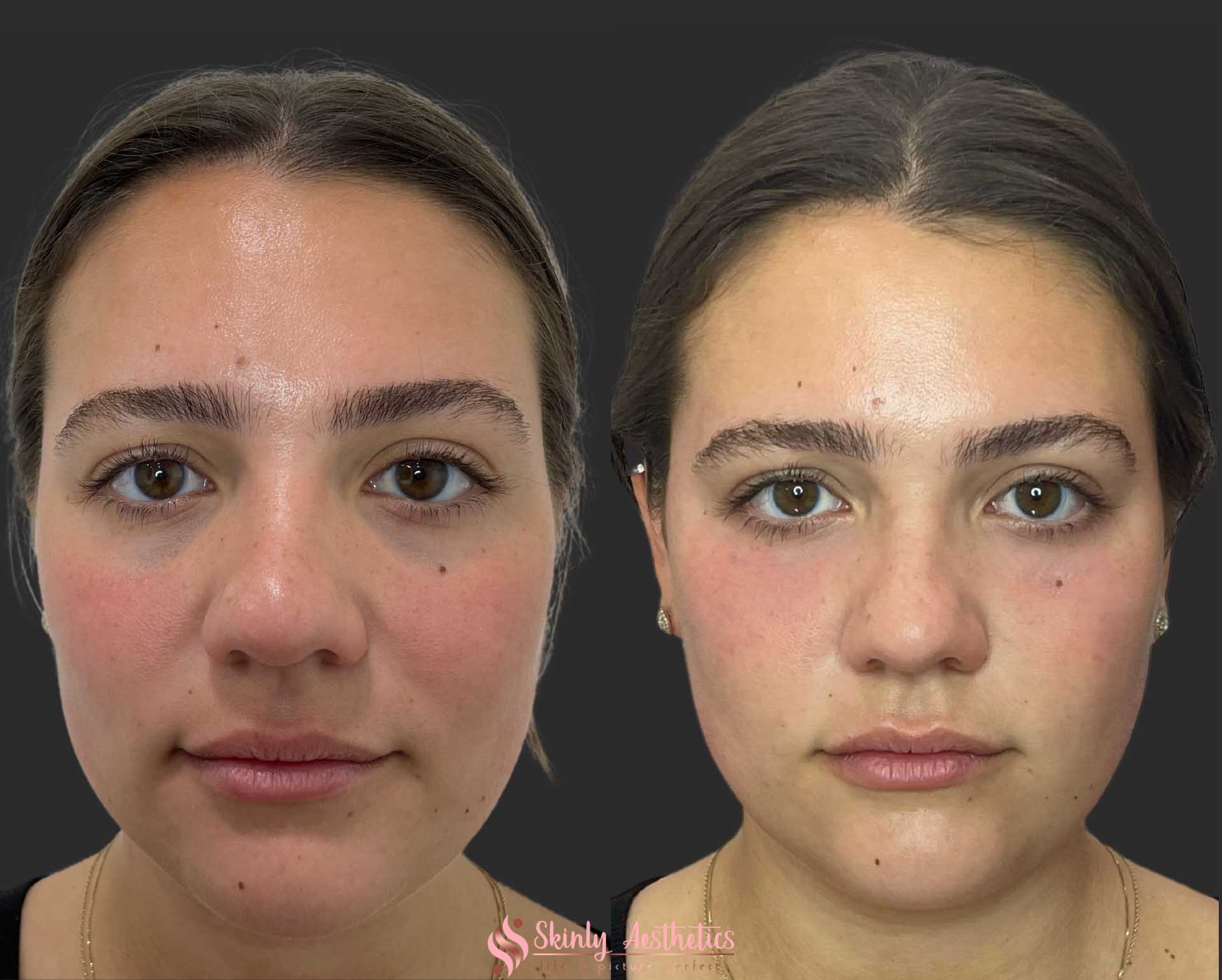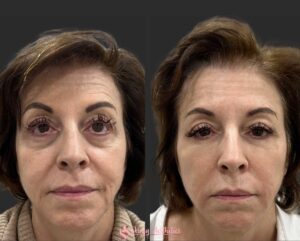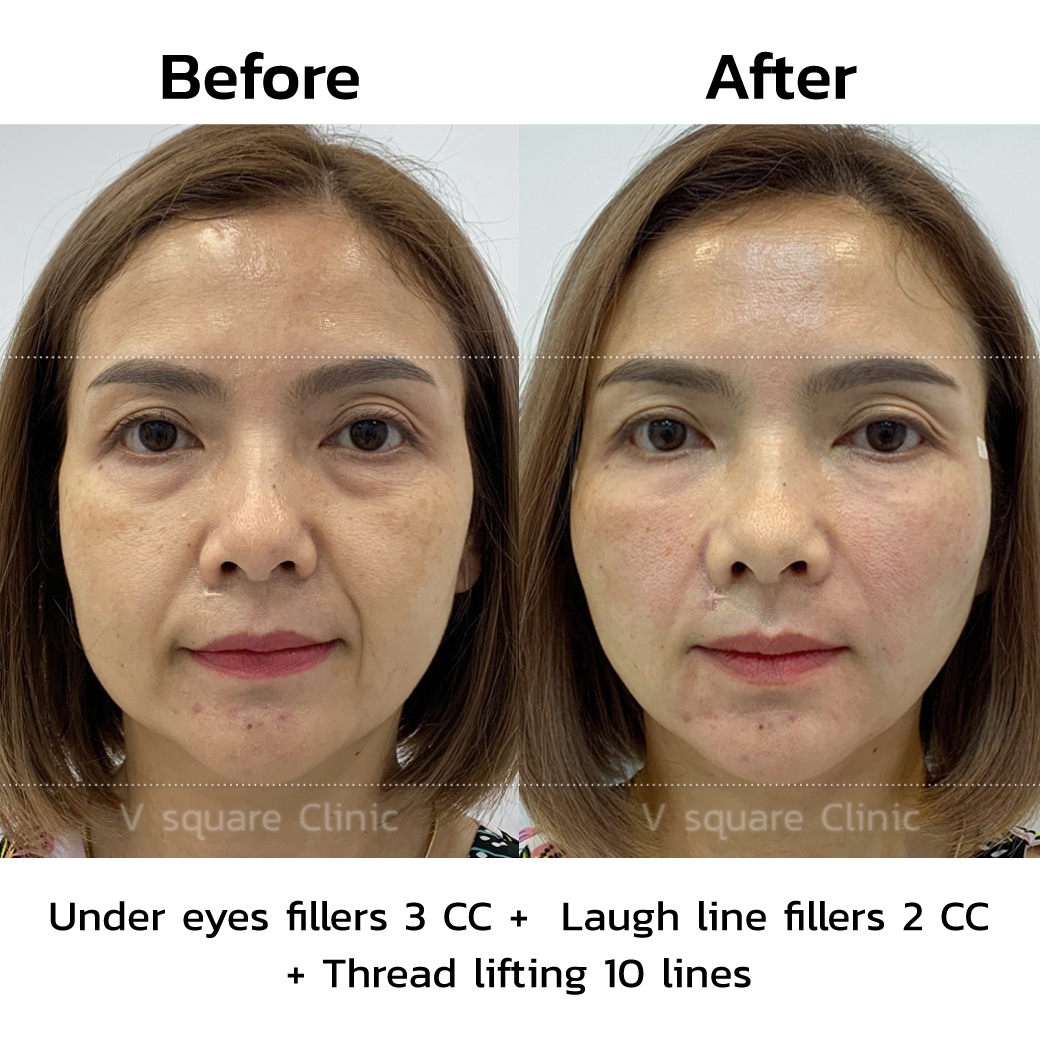Rejuvenate Your Gaze: A Comprehensive Guide To Under-Eye Fillers
Tired of looking tired, even after a full night's sleep? Those persistent dark circles, hollows, and fine lines under your eyes can be frustrating, making you appear older or more fatigued than you feel. If you've been exploring solutions, you've likely come across under-eye fillers. But what exactly are they, and can they truly deliver on their promise of a brighter, more youthful appearance?
This comprehensive guide will break down everything you need to know about under-eye fillers, drawing insights from dermatologists and experts. Whether you're looking into under-eye filler to treat wrinkles and dark circles, or simply reverse sunken bags, we'll cover the benefits, the procedure, potential risks, cost, and how long you can expect the results to last. Inside, dermatologists share their thoughts on the benefits, procedure, cost and more.
What Exactly Are Under-Eye Fillers?
At its core, under-eye filler is a targeted injection designed to address specific concerns in the delicate area beneath your eyes. Most commonly, these fillers utilize hyaluronic acid (HA), a substance naturally found in your body that helps maintain moisture and volume in the skin. When injected, HA fillers work by attracting water, which helps to plump up the treated area and restore lost volume.
- Brunette With Red Undertones
- Best Jeans To Hide Tummy
- Pubic Area Exfoliant
- Do Men Like Their Nipples Sucked
- Ideas For Black Hair Color
As described by experts, under eye filler is a targeted injection of hyaluronic acid in an area under the eye in order to minimize unwanted dark circles, hollows, lines or wrinkles. Dermatologists use various types of HA fillers, each with slightly different properties and consistencies, to achieve the best and most natural-looking results for individual needs. This precise application is key to ensuring a smooth, refreshed appearance.
Who Can Benefit from Under-Eye Fillers?
Under-eye filler is a popular treatment for those looking to reverse sunken bags and dark circles. While they can address a range of concerns, their effectiveness largely depends on the underlying cause of your tired-looking eyes. Understanding whether you're a good candidate is the first step.
According to Dr. Liotta, volume loss under your eyes is what filler works best for. As we age, we naturally lose fat and bone density in our faces, including the area around our eyes. This volume loss can lead to a hollowed-out or sunken appearance, often referred to as a "tear trough deformity." By filling this hollowness, fillers can create a smoother transition from the lower eyelid to the cheek, significantly improving the overall aesthetic and evening out the sunken appearance of the under-eye area.
- Stencil Cat Eye
- How To Tone Down Brassy Highlights
- Purpose Of Nipple Clamps
- Jeremiah Vs Conrad
- Ina Garten Sour Cream Cornbread
Beyond simple volume loss, Dr. Liotta also notes that under-eye fillers can be used in some cases to treat puffy bags, a condition known as pseudoherniation of orbital fat. In these instances, the filler can be strategically placed to camouflage the protrusion, creating a more even and less puffy surface.
Specifically, under-eye fillers are highly effective for addressing:
- Hollows and Sunken Appearance: They fill the hollowness under the eyes, creating a smoother contour and reducing the appearance of shadows.
- Dark Circles: While not all dark circles are treatable with fillers (some are due to pigmentation or thin skin showing blood vessels), those caused by shadowing from hollowness can be significantly lightened. Eye fillers are used to lighten the tear trough, or under-eye area, by adding volume and lifting the skin away from underlying structures.
- Fine Lines and Wrinkles: Under-eye fillers can address wrinkles and fine lines by plumping the skin and providing a smoother, more hydrated surface. Because they fill the hollowness under the eyes, they can even out the sunken appearance of the under-eye area, which often exacerbates the look of lines.
The Benefits of Under-Eye Fillers
The appeal of under-eye fillers lies in their ability to provide a noticeable yet natural-looking rejuvenation. The benefits extend beyond just looking less tired, contributing to an overall refreshed and youthful appearance:
- Plumper and Brighter Look: They make that area look plumper and brighter by adding subtle, natural-looking volume, which reflects light more evenly.
- Reduced Under-Eye Shadows: By filling hollows and improving skin texture, they effectively reduce under-eye shadows, which are often the main culprit behind a tired appearance.
- Youthful and Well-Rested Appearance: Reducing under-eye shadows can make you look well-rested and significantly more youthful, often giving the impression of having had a good night's sleep.
- Improved Skin Smoothness: By addressing fine lines and wrinkles, the skin texture in the under-eye area can appear smoother and more supple.
- Non-Surgical Solution: As an injectable treatment, it offers a non-invasive alternative to surgical procedures for under-eye rejuvenation, with minimal downtime.
The Procedure: What to Expect
The under-eye filler procedure is relatively quick and typically performed in a dermatologist's or plastic surgeon's office. Before the injection, your practitioner will thoroughly cleanse the area and may apply a topical numbing cream to ensure your comfort. The filler is then carefully injected using a very fine needle or, more commonly for safety in this delicate region, a blunt-tipped cannula. The choice of instrument depends on the practitioner's preference and the specific area being treated.
The entire injection process usually takes only 15-30 minutes. Your practitioner will often use a "less is more" approach, injecting small amounts of filler and assessing the results to avoid overcorrection. After the treatment, you might experience some mild swelling, bruising, or redness, which typically subsides within a few days. Your dermatologist will provide specific aftercare instructions to help minimize these side effects and optimize your results, such as avoiding strenuous exercise and certain medications that can thin the blood.
How Long Do Under-Eye Fillers Last?
One of the most common questions about under-eye fillers is how long the results will last. The longevity of under-eye fillers can vary significantly from person to person, depending on factors like the specific type of hyaluronic acid filler used, your individual metabolism, and the specific area treated. Generally, hyaluronic acid fillers in the under-eye area can last anywhere from 6 months to 2 years. Because the under-eye area is not as mobile as other parts of the face (like the lips or mouth), the filler tends to break down more slowly, often leading to longer-lasting results compared to other facial areas. Many patients find that annual touch-ups are sufficient to maintain their desired appearance.
Cost of Under-Eye Fillers
The cost of under-eye fillers is another important consideration for anyone looking into this treatment. The price can vary widely based on several factors, including:
- The type and brand of filler used: Different HA fillers have different price points.
- The amount of filler required: Fillers are typically priced per syringe, and the amount needed depends on the extent of volume loss.
- The experience and qualifications of the injector: Highly experienced, board-certified dermatologists or plastic surgeons may charge more for their expertise, which is often a worthwhile investment for safety and optimal results.
- The geographical location of the clinic: Prices can differ significantly between urban and rural areas, or even between different cities.
On average, a single syringe of hyaluronic acid filler can range from $600 to $1,500 or more. It's important to have a clear discussion about the total estimated cost during your initial consultation, including any potential follow-up appointments.
Potential Risks and Considerations
While under-eye fillers are generally considered safe when performed by a qualified and experienced practitioner, it's crucial to be aware of the potential risks. The under-eye area is delicate and complex, with numerous blood vessels and nerves, making precision and anatomical knowledge paramount. To help guide you ahead of your under-eye filler consultation, we’re breaking down each of the commonly used fillers, potential risks, and other things you should know before undergoing the procedure.
Potential risks include:
- Bruising and Swelling: These are the most common side effects and usually resolve within a few days to a week. Applying ice packs can help minimize them.
- Redness or Tenderness: Mild irritation at the injection site is normal and typically subsides quickly.
- Lumps or Bumps: These can occur if the filler is not injected smoothly or if too much is used. Often, they can be gently massaged away by the practitioner or, if persistent, dissolved with an enzyme called hyaluronidase.
- Tyndall Effect: A bluish discoloration that can occur if the filler is injected too superficially. This is also treatable with hyaluronidase, which breaks down the hyaluronic acid.
- Allergic Reaction: Though extremely rare with hyaluronic acid fillers (as HA is naturally occurring in the body), it's a possibility.
- Vascular Occlusion: This is the most serious, though very rare, complication. It occurs when filler is accidentally injected into a blood vessel, potentially leading to tissue damage or, in extremely rare cases, blindness. This risk underscores the absolute necessity of choosing an injector with extensive anatomical knowledge, advanced training in injectables, and the ability to manage complications.
Choosing a board-certified dermatologist or plastic surgeon with specific expertise and a proven track record in under-eye injections is paramount to minimizing these risks and ensuring a safe and effective outcome. Always ask about their experience and see before-and-after photos of their work.
Before Your Consultation: What to Know
Before you commit to under-eye fillers, a thorough consultation with a qualified professional is essential. This is your opportunity to discuss your concerns, understand the procedure, and ensure it's the right solution for you. During this consultation, your practitioner will assess your under-eye area, discuss your medical history (including any medications you're taking), and explain the different types of fillers that might be suitable for your specific needs.
Don't hesitate to ask questions about their experience, the specific products they use, the expected downtime, and what results you can realistically expect. A good practitioner will manage your expectations and provide a clear, honest assessment of whether fillers are the best option for you, or if other treatments might be more appropriate.
Conclusion
Under-eye fillers offer a powerful and effective solution for many individuals looking to address the signs of aging and fatigue around their eyes. By targeting volume loss, hollows, dark circles, and fine lines, they can make you look plumper, brighter, and significantly more well-rested. While the treatment is popular and generally safe, understanding the procedure, its benefits, potential risks, and cost is crucial. Always prioritize choosing a highly experienced and qualified dermatologist or plastic surgeon to ensure the best possible results and minimize complications. With the right approach and a skilled hand, under-eye fillers can truly rejuvenate your gaze and help you put your best face forward.
Article Recommendations
- Powerful Nail Colors
- Sassy Bob
- Jane Seymour Makeup
- Things To Get For Grandpa
- Kate Beckinsale Eye Color



Detail Author:
- Name : Emmanuelle Leffler
- Username : oklocko
- Email : adaline89@hotmail.com
- Birthdate : 1990-01-11
- Address : 3608 Bednar Point New Daynaburgh, ND 49064-7026
- Phone : +1-860-602-3077
- Company : Jakubowski LLC
- Job : Audio and Video Equipment Technician
- Bio : Rerum id veniam voluptas est qui. Aut itaque placeat rerum in voluptatibus iste possimus ipsa. Tempore inventore nulla beatae non laboriosam vel.
Socials
instagram:
- url : https://instagram.com/pfannerstill2019
- username : pfannerstill2019
- bio : Ex cum aperiam perferendis. Itaque et est ea unde provident enim tempora sapiente.
- followers : 2039
- following : 2942
linkedin:
- url : https://linkedin.com/in/johan_pfannerstill
- username : johan_pfannerstill
- bio : Illum sunt at at dicta.
- followers : 5532
- following : 463
facebook:
- url : https://facebook.com/pfannerstill1986
- username : pfannerstill1986
- bio : Nesciunt tempora fuga possimus officiis in quod.
- followers : 1380
- following : 1183
twitter:
- url : https://twitter.com/johan6767
- username : johan6767
- bio : Laboriosam repudiandae et veritatis. Et temporibus incidunt occaecati. Fuga facere eius ut.
- followers : 1141
- following : 1988